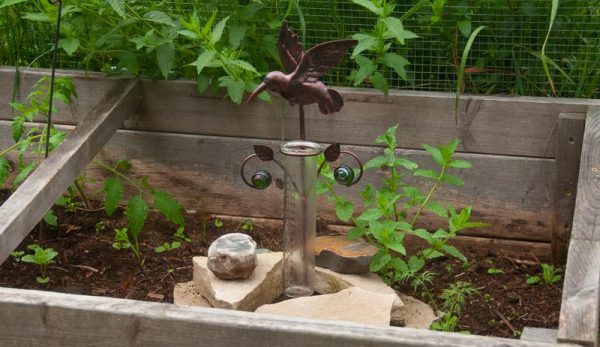
Did you know a rain gauge is one of the simplest and most practical tools a farmer can have?
A rain gauge is exactly what its name suggests—an instrument used to gauge rainfall. While rain gauges come in many different sizes (and even designs), the simplest rain gauge is a glass or plastic tube adorned with the marks of a ruler to indicate just how much rain has fallen.
If, after a heavy rainstorm, the gauge contains 1 inch of water, you know the area your farm is in received 1 inch of rain. Generally speaking, the wider the diameter of the rain gauge, the more accurate the results.
Read more: Catch that rain with an IBC tote instead of a barrel.
Why Does My Farm Need a Rain Gauge?
You might wonder why you need a rain gauge when online weather services can tell you how much rain falls during any given rainstorm.
The problem is, online services aren’t as area-specific as your own rain gauge. Precipitation amounts can vary widely across relatively small regions. So the amount of rainfall your town or city officially records might not match the amount your farm receives.
Measuring rainfall is important for a farm growing thirsty gardens, orchards, etc. So having your own rain gauge is a good way to measure super-localized precipitation and determine when (and how much) you need to water your plants.
And the most inexpensive rain gauges can be purchased for a few dollars. So there’s really no reason not to have one on hand.
Location, Location, Location
But using a rain gauge isn’t as simple as sticking it on the side of a building and waiting for rainfall to accumulate. Installing a rain gauge requires placing some careful thought into finding the right location. Otherwise, you risk receiving inaccurate results.
The main consideration is to find an open area far away from large objects. So, installing a rain gauge on the side of your barn is out.
Such objects can influence how much rain reaches your gauge. A widely used rule of thumb instructs that the distance between a rain gauge and a large object should be twice the height of the object. If your barn is 30 feet tall, the rain gauge should be installed at least 60 feet away.
On the other hand, rain gauges provide the most accurate measurements when they’re protected from heavy winds. Installing one in the middle of a 20-acre field isn’t the best choice either.
The most ideal location is a clearing protected on all sides by wind-breaking obstacles. If your barnyard is surrounded by windbreak trees, that might be the perfect choice. You just need to find a spot far enough away from each building and tree.
Read more: Planting trees? Check your soil drainage first.
Easy Installation
Once you’ve found the right location on your farm for a rain gauge, installing it is a breeze. While some simple rain gauges are designed to be inserted directly into the ground, you’ll get better results by installing a post in the ground to hold the rain gauge.
This will ensure the gauge stays level (important for accurate measurements) while also elevating the rain gauge above the ground. For best results, the top of the rain gauge should sit several feet above ground level.
For a hobby farmer hoping to gauge local rainfall, achieving accuracy to the 100th of an inch isn’t necessary. Don’t be too concerned if you can’t find an absolutely perfect location.
Just do your best, enjoy the results … and remember to empty the gauge after each rainfall!





